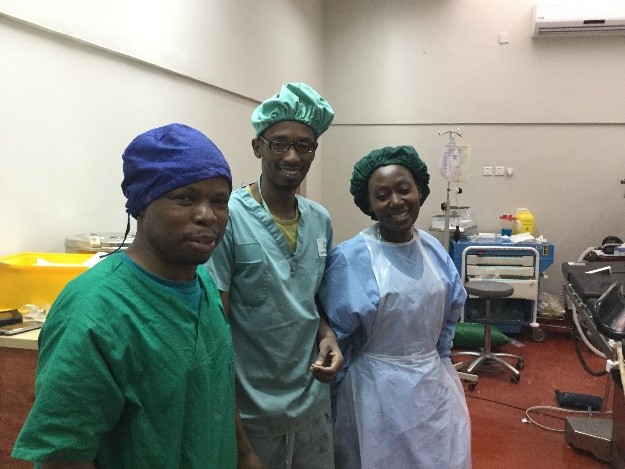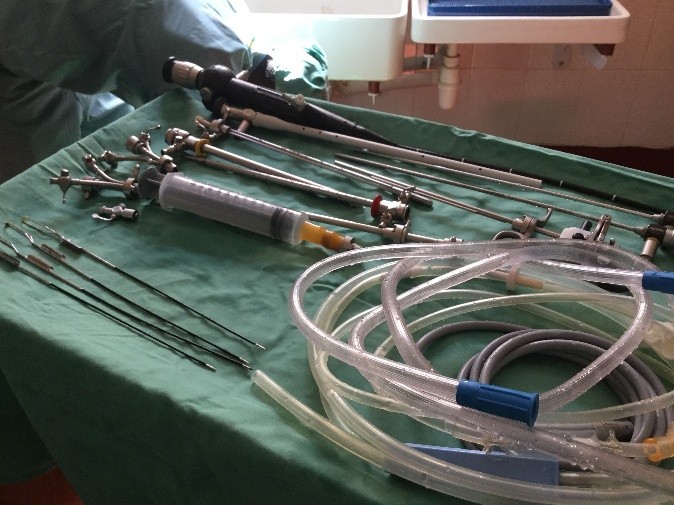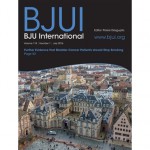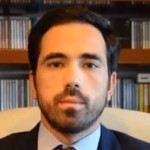Urology in Zomba, Malawi. Reflecting on surgical care in a Resource-Limited country
At the recent AUA meeting in San Diego as at all of our major meetings, a tremendous amount of data was presented and technology displayed to advance our specialty. Walking through exhibit hall one sees an expensive bauble at every turn. The advancement of urology over the last 50 years has been remarkable. We have a lot to be proud of. I think we have the most interesting, exciting specially in all of medicine. Urologist are generally technophiles and have always loved to push surgical procedures to new heights. From robotics, lasers and endourology to advancing the molecular understanding of disease, urologists have always aimed to drive the bus.
As many of you know, I am on a short trip to Malawi Africa. I have written about this elsewhere. I am here on one hand as a board member for Dignitas International. On the surgical side it is not a mission under the guise of anyone but rather my own personal attempt to understand what urology and surgery in a resource poor country might look like. I have been here in Zomba, Malawi and working at Zomba Central Hospital, which is one of four central hospitals in the country.
A goal has been to try and assess what the basic urological needs might be in this part of the world and see how I could help bridge the gap, whether it would be with equipment, external manpower or ultimately by improving training and leaving something sustainable. I optimistically set out, confident in my abilities to eventually network and bring colleagues together and establish over time a reasonable urology program that at least resembles something familiar. I have the COSECSA guidelines on what it takes to establish a training program at my side. Perhaps nothing illustrates what a daunting task this will be like my days in surgery this week.
To start with, a typical OR at ZCH requires some refocusing compared to what I am used to. My DaVinci robot is nowhere to be seen
I made ward rounds with my clinical officer yesterday and lined up several TUR type cases to try and do, with men bleeding from bladder tumours (all invariably Bilharzial disease) as well as men in retention. Some have had catheters for months, even years.
First there is the set up. No discussion about lasers and lifts or any other such fun. We don’t even have the 3L irrigation bags. For my irrigation set up, with a little water and some chlorine pucks we are ready to go.
My first patient was a TURBT. A very large, incompletely resected lesion, actively bleeding. I clearly left disease behind but perhaps he won’t bleed for a while. The tissue will not be sent to pathology. Patients need to pay 16,000 MWK for it. The typical pay for many is 20,000-30000/month and 1$USD=700 MWK. Managing him from any even rudimentary oncological perspective is a non-starter.
The second patient also had a bladder tumour. It was palpable as a mass to just under the skin. Again, the goal was to stop some bleeding, at least for a few weeks. He almost certainly has metastatic disease but I have no way to image and know for sure. I did order a chest xray to look for obvious pulmonary nodules. He will eventually just quietly die.
Before I could start a third case I found myself in the gynecology OR 2 weeks after a hysterectomy post-delivery for bleeding. Following an injury, the left ureter was leaking. I attempted the repair as best as I could with no proper light, no electrocautery no retractors and no ability to stent my freshly re-implanted ureter. All of this on an HIV+ve new mother. I hope it heals open. I am not sure if it will. I have come to understand that ureteral injuries are a not uncommon consequence of obstetrical care in Malawi.
My third patient had a TURP which was fairly straightforward. He should hopefully void assuming reasonable residual bladder function. He has had a catheter in place for months.
At least we did do some work Thursday. On Tuesday my four patient list turned into one as my anesthetist did not attend. Before surgical care can be improved, the critical shortage of anesthesia care has to also be addressed. I also wrote about that earlier.
I did bring a surgery checklist to ZCH on Tuesday.
And Thursday in follow up, I gave a talk to the surgical team about checklists and so that is certainly good.
They keep asking me to see men in the clinic with catheters. With the inefficiencies of late start times, anesthesia shortages and only a week to go, most will get left behind. It is really a depressing thought.
My OR team though is there to help and keen to learn.
Daniel, Rex (T Rex) and Maryeuster
As I reflect on my experience in the operating room during week one I am struck by how discordant what I saw in San Diego was from the realities still faced in much of the world. Basic endoscopic equipment does not exist. Serendipitously, a retired colleague of mine did bring some basic equipment a few months ago and this one set, washed and then resterilized (in a pail of chlorinated water) is all that we have. I am still not clear what happens when the loops wear out.
I do question when we pull millions of dollars and much intellectual capital into improving technology and chasing robots as to what are we really doing to benefit the care of our urological patients on a global scale. Do we have some obligation as champions of mens’ health and urologic care more broadly, to play a part? I do wonder whether some of our intellectual energy and financial resources could be better spent simply bringing parts of this world even into the 1970s. If this was valued as worthy of academic support and promotion the way oncology, endourology and everything else is in our specialty is, then some of the bright young minds in our field might move this along further. Whether we do a robot prostatectomy retroperitoneally or intraperitoneally, debate about a Rocco stitch or tweak this or do that, these changes are often incremental at best. Supine versus prone PCNL? Who cares. Other parts of the world I think deserve some of our high-level expertise to meet their complex challenges. I would invite the urological community to try and collectively address this problem. Should we keep pouring all of our massive resources only to steady, incremental benefit? Clearly we always must advance the body of knowledge and the state of the art. However, is there a role for reserving some resource and energy to advocate for simpler things that could affect a change on the order of several magnitudes? Some of the easier things we might do is to at least act as advocates and lead some process change whether it be a surgical checklist, counting instruments and sutures pre and post operatively and ensure better preoperative screening and post-operative care. Updating equipment and building surgical expertise necessarily follows.
Laser TURP? Plasma button? Urolift? The men in Malawi and much of Africa would be happy just to get rid of their catheters.
We often joke about our ‘first world problems’. It’s time to get serious.
Let’s do better.
Dr Rajiv Singal is a Urologist at Michael Garron Hospital and an Assistant Professor in the Department of Surgery at the University of Toronto
Follow him on Twitter at @DrRKSingal
To read more about Dr Singal’s experience in Malawi follow this link https://www.rajivsingal.com/blogCategories/view/malawi-june-2016/













He Rajiv;
From your commentary, it sounds like a lack of resources and follow-up will result in the net effect of much of your work just postponing a miserable death, not restoring healthy life. It appears that so much of what would be possible here is a forlorn hope there.
Please confirm that so much is not in vain.
I am reminded of Don Quixote.
Hi Ed. I dont think it is in vain but we need to be smart about it and address change at a systems level. Changing culture on site is particularly hard
Doc;
You are the epitome of dedication, kindness and bravery.
Travel safely,
Very kind of you Sam. Just trying to understand the inequities in this world a little better. We should all try and play a part
Rajiv
Rajiv
I was reading an article on robotic repair of complications from robotic cystectomy, and this link to your writing came through on twitter. What a super article, how refreshing, what great work you are doing, and what an eye-opener for the rest of us bogged down in ‘western’ urology. Thanks for highlighting this, and please keep the BJUI updated into the future so this can stay front of mind – we need a co-ordinated action to help.
Great work,
Nick
Also. your irrigation bucket looks like it is more than 1m above the patient!
Hi Nick. Thank you for the comment. it really is important that we keep the discussion front of mind. Would love to explore avenues to help at least to start to bridge the gap. I have some ideas around training. We shall see. As far as the height of the irrigation goes you are correct. Too high but it was the only shelf we had!
Rajiv
Hi Rajiv,
I will say here that I am impressed that you took this humbling learning journey and wish like you that western medical advances were not so unavailable to most of the world.
I know you are back in Canada but I imagine changed for life by this experience.
Peter
Hello Dr. Singal.
I just finished reading your post.
I commend your efforts. You are a man on a mission and may you be blessed with success.
As you may know that I was born and raised in Daressalaam, Tanzania.
My first visit back to Tanzania was in 2010 (after 23 years) needless to say that it was a big cultural shock.
I was able to visit a few small towns and smaller cities. In one of those cities (Tanga) I went to visit a young family member (27yr) old at the hospital. I can still smell the stench from that hospital. He was hooked on an IV bag that was long since empty, had a tube from his nose that was literally hanging in a bucket by his side. When I asked the Dr’s about his diagnosis/prognosis. The answer was ” Just pray . This hospital, which is the only one in that city, has neither the resources nor medical personnel to treat anything more then a common cold.”
When I further enquired as to what I could do to help. The reply was :
1. Educate the locals on personal hygiene. How to avoid infections and improve post care.
2. Ask the advanced nations to donate their used and not being used medical equipment to these facilities.
But above all. Have a medical personnel come frequently to teach and hold accountable those taught.
Sorry for the long post. Was just relating my personal experience and perspective.
Be blessed.
Fareedah Lila
This was a very interesting read. You make a compelling point about the resources being used here for incremental benefits versus what those funds could do in less fortunate areas of the world. It sounds like you need a year to spend there rather than 2 weeks but this was certainly an excellent start for your efforts.
I couldn’t help but think back to the recent momentous donation from the Garrons. Having experienced what you did with DI, I’m sure you can imagine what only a fraction of that donation would do for those areas you recently visited.
Interesting and thoughtful article. Having spoken with other doctors who visit Africa, it seems clear that we should be focusing efforts on local education of the population and the medical staff … and so your plans seem extremely sensible. Equipment helps but can only last so long and with no way of maintenance, repair or replacement parts, the benefit is short lived. But it seems so obvious to offer it. When I visited the local hospital in Zanzibar, I was struck by the total lack of a single rigid ureteroscope. So anyone with a ureteric stone that didn’t pass needed open surgery. What a difference one bit of kit would make in that situation. It does make you realise the comparatively small amount of money needed to make a big difference, contrasted against the vast sums haemorrhaged in the western world. I don’t remember the exact figures, but the annual budget in the main hospital in Zanzibar was just a few days turnover for our hospital in London!
Thank you Matt. Many things to consider. Ideally training someone locally, in Africa will hopefully yield better retention effort. The hyperlink to COSECSA in the blog did not get added but briefly to ultimately create a local training effort will need two on site urologists. A very long way to go. Here are the COSECSA requirements to ultimately develop a training program:
https://www.cosecsa.org/sites/default/files/Criteria-for-Training-Posts-2009.pdf
Given that TURP is novel technology in Malawi it seems hopeless but I do believe we all must try and contribute. No one in the world deserves to have such utter lack of access to care simply because of the misfortune of being born in a certain locale:
Congratulations Rajiv and thanks for choosing the BJUI for this blogpost.
I enjoyed reading your updates during BAUS week in Liverpool.
The Urolink similarly does great work in Africa and dedication such as this is truly commendable.
Many thanks Prokar. We should look to better coordinate efforts across the world.